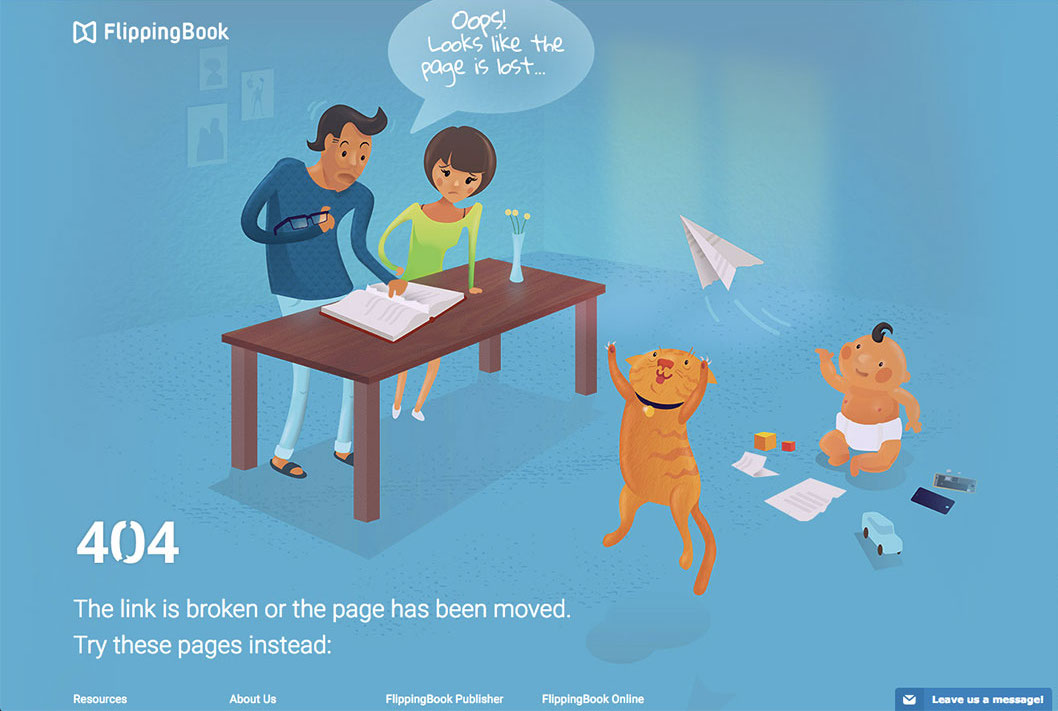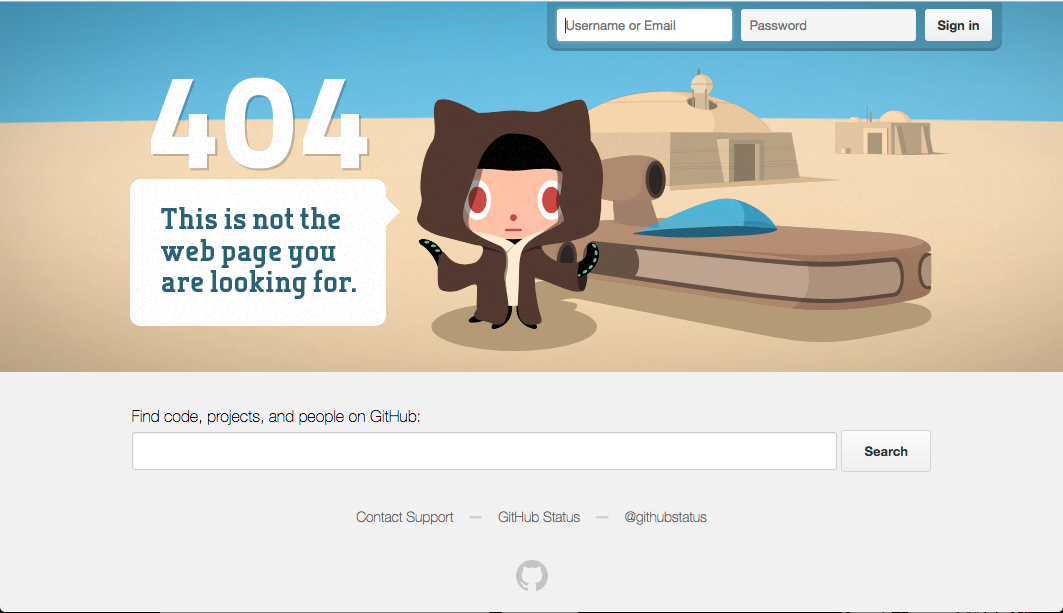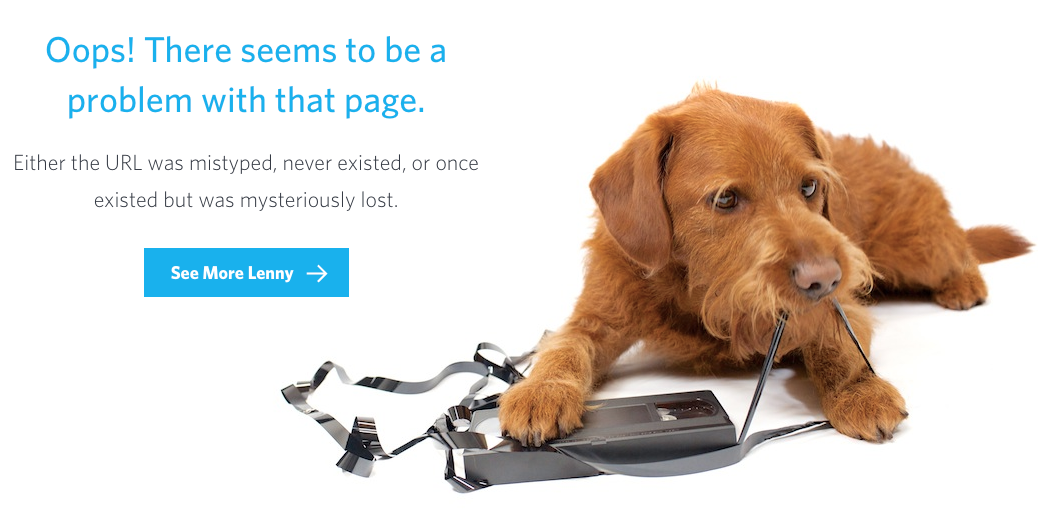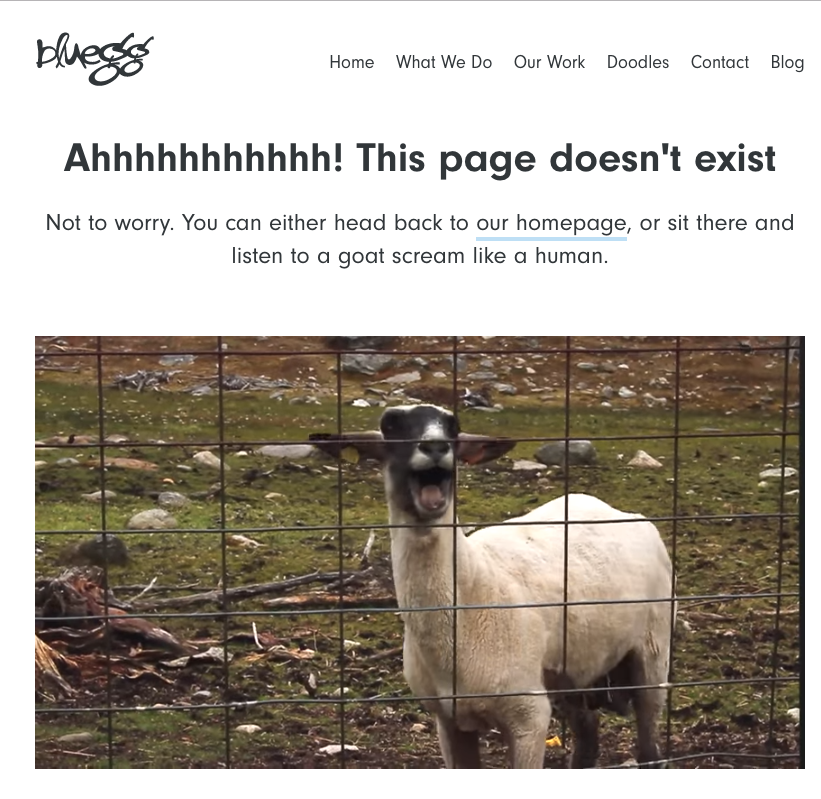404 error pages could be hurting your website's performance - here's the lowdown on 404s and how to fix them.
You can also jump to different points using these quick links:
What are 404s?
Are 404s Bad For My Site?
Types of 404s and How to Find Them
How To Fix Your 404 Error Problem
What Are 404 Errors?
Every web-related error has a specific error code. Code 404 refers to a “not found” error – meaning that your browser was able to connect to the server it was looking for, but the page it was targeting can’t be found.
You’ll get a 404 error whenever you click on a link that no longer points to an active page. 404 error pages are inevitable – they are the natural by-product of a site that is dynamic and changing and the occasional website redesign.
Are 404s Bad For My Site?
While 404s are a natural part of websites, that doesn’t mean they aren’t harmful to your site. The two main areas 404s have a negative impact on are User Experience (UX) and search engine ranking and performance.
User Experience
User Experience (or UX) in relation to web design refers to the overall experience of a person using a website, focusing on how easy or pleasing it is to use. Think about how you feel when you are trying to find a product or service on a website and you click a link expecting to find certain information only to be met with a 404 page? If you are like most users, you will feel frustrated and annoyed, and much more likely to leave the website and look somewhere else.
Search Engine Ranking and Performance
Google’s official position on 404s is that they are a natural part of websites and Google doesn’t lower the grade of your site because you have 404s. In reality, 404s can have a direct impact on your organic rankings.
When a link directs users to a page that returns a 404 error, Google recognizes that the page is no longer available and removes it from their search index. It also drops all of the PageRank from links pointing to the page, rendering the links worthless.
If there are lots of links pointing to inactive or non-existent pages on your website that return 404 errors, you’re missing out on PageRank that could help you rank higher in Google’s search engine results and generate more traffic.
The UX issue described above also has an impact on your site ranking, as lots of 404 pages will encourage users to leave and not come back, leading to a drop in ranking.
Types of 404s and How To Find Them
There are three general types of 404 errors and different methods for identifying them.
External 404s
These occur when an external site has a link to your site that doesn’t work – either because you have moved/removed the content, or because the other site has mistyped the link to your site.
Outgoing 404s
These occur when a link from your site to another site breaks – due to the other site removing content or you making an error in the link. Links evaporate all the time and you have no control over another site’s content, so outgoing 404s aren’t uncommon.
Regular site monitoring will help you keep on top of your outgoing links to make sure they are all still reaching the page you want them to.
Internal 404s
Internal 404s occur when your site is linking to another “not found” page on your own site. For example if one of your products links to another product that you have removed and you haven’t updated the link.
In addition to regular monitoring of your site and its links, there are several free tools available that will check your site for internal 404s (Broken Link Checker, Screaming Frog, or Google Webmaster Tools) and report them to you.
How To Fix Your 404 Error Problem
Fixing your website’s 404 errors is a great way to improve usability and increase the performance of your site’s search engine ranking.
The first step is to monitor your site and check for 404s regularly using the methods mentioned above for the different types of 404s.
301 Redirects
The easiest and most effective way to fix 404 errors is to use a 301 redirect.
301 is an HTTP response code that signals to the user’s browser (as well as Google’s search indexing robots) that your content has moved permanently from one URL to another one. Unlike 404 errors, 301 redirects keep PageRank flowing to your site.
When you come across a link that delivers a 404 error, use a 301 redirect to redirect users to the most relevant page on your website. This will direct PageRank from the old URL towards the new one.
The Redirects function in Mintox Web Pages makes this process simple.
Custom 404 Pages
Custom 404 pages are essential to improving the user experience for your site. As we said before, users are much more likely to leave your site if they hit a 404 error page, especially in the case of a standard, out-of-the-box 404 page that only gives them one option – go back where they came from. Designing a 404 page that allows users to progress to other parts of your site (eg Home or Features), will increase the likelihood of keeping them – turning an error into an opportunity. Check out how to set a custom 404 page up in Mintox here.
Tips for Good 404 Pages:
Explain the Problem
Good 404 messages need to cater to the least technical person who might be using your site, so your message needs to concisely explain what went wrong and what they can do next in plain language, like FlippingBook does:

Cut Down on Clutter
Some sites seem to have designed their 404 pages in a panic and decided to show the user everything they have in the hopes of making them bite. Overwhelming a user with tons of links is the best way to cognitively overload an already frustrated user. Your 404 page should include a handful of key links for users to choose from – the Home page for users who aren’t sure what they are looking for yet, maybe your blog or About Us page – whatever you choose, aim for no more than 4 links on the page.
And don’t just give them links. Adding a search box to the 404 page allows users a sense of control over the experience, like GitHub does

Cultivate Your Brand
The first (and arguably most important) step to convincing a visitor who has landed on a 404 page not to leave your site is to create a page that is attention-grabbing, creative, and fits the aesthetic of the rest of the site. Keep in mind that a 404 page has to favour function over form, so keep the focus on helpful links/navigation with an image that markets your brand or even just brings a smile to the user’s face, like the Wistia page:

Which brings us to our last tip:
Use a Little Humour
A good joke is one of the best ways to cover for an embarrassing situation or mistake. Making your visitor laugh can help neutralise a negative experience with a positive one – and they will probably be more forgiving of the error, for example the Bluegg site:
